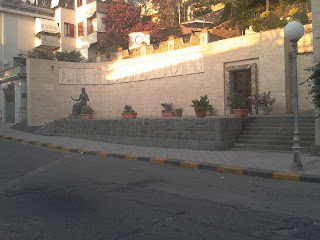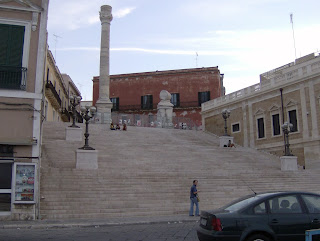Experts divided over how brilliant artist met his end
 |
| Ottavio Leoni's portrait of Caravaggio |
The death of the brilliant Renaissance artist Caravaggio is said to have occurred on this day in 1610 but the circumstances and even the location are disputed even today.
Official records at the time concluded that the artist died in the Tuscan coastal town of
Porto Ercole, having contracted a fever, thought to have been malaria.
However, there is no record of a funeral having taken place, nor of a burial, and several alternative theories have been put forward as to what happened to him.
One, which came to light in 2010 on the 400th anniversary of the painter's death, is that Caravaggio's death was caused by lead poisoning, the supposition being that lead contained in the paint he used entered his body either through being accidentally ingested or by coming into contact with an open wound.
This was supported by research led by
Silvano Vincenti, a prominent art historian and broadcaster, who claimed to have found evidence that Caravaggio had been buried at a cemetery in Porto Ercole that was built over in the 1950s.
Some remains were transferred to the municipal cemetery in Porto Ercole and among nine potential sets one was identified through DNA testing as having a 50-60 per cent chance of being Caravaggio. The bones contained toxic levels of lead, enough at least to have sent him mad.
Another theory, put forward in 2012 by
Vincenzo Pacelli, a professor at the University of Naples, is that the artist, notorious for a quick temper and violent behaviour, was assassinated by the ancient order of the
Knights of Malta with the connivance of the Vatican.
Professor Pacelli says documents from the Vatican Secret Archives suggest that the artist was murdered as an act of vengeance, following injuries inflicting by Caravaggio on a member of the order during a brawl in Malta. He already had a death sentence on his head, issued by the Pope, after killing a man in a fight in Rome in 1606.
 |
| Caravaggio's The Crucifixion of St Peter |
The Pacelli theory is that Caravaggio's body was thrown into the sea off
Civitavecchia, north of Rome and some 70km south of Porto Ercole. The professor cites another document, supposedly written by Caravaggio's doctor to record his death, in which the place name Civitavecchia is rubbed out and replaced with Porto Ercole, as well as an account of his death written in 1630 by an archivist who referred to it as an "assassination".
Caravaggio was born
Michelangelo Merisi or Amerighi in Milan in 1571. It is thought his family moved to the town of Caravaggio, just south of
Bergamo, because of an outbreak of plague in Milan soon after his birth. He adopted the name of the town as part of his signature when he began painting, eventually becoming known simply as Caravaggio.
He returned to Milan to train under
Simone Peterzano who had himself trained under
Titian. He went on to work in Rome, Naples, Malta and Sicily, where he was in demand to produce paintings for the many new churches and palaces that were being built.
His work became famous for his realistic observation of the physical and emotional state of human beings and for his dramatic use of light and shade, known as
chiaroscuro, which gave his paintings a three-dimensional quality. This was a formative influence for the baroque school of painting.
Some of his major works, such as
The Calling of St Matthew, The Crucifixion of St Peter and
Deposition, can be found in churches in Rome, but his work is also well represented in the
Uffizi gallery in Florence.
 |
Caravaggio's David with the Head of Goliath
features Caravaggio's own face on the head |
It is said that at the time of his death he had left Naples by boat for Rome, where he anticipated that his death sentence for the Rome murder would be lifted. In his painting of
David with the Head of Goliath, completed shortly before his death, David is depicted with a strangely sorrowful expression as he gazes on the severed head of the giant, on which Caravaggio painted his own face. It has been suggested that the painting represented his plea for clemency.
Travel tip:
In addition to its connection with the artist, the town of Caravaggio is well worth visiting to see the
Sanctuary of the Madonna di Caravaggio, which was built in the 16th century on the spot where the Virgin Mary is said to have appeared to a local peasant woman. The Sanctuary was later rebuilt and completed in the 18th century and is now a grand building visited by pilgrims from all over the world.
Travel tip:
Porto Ercole is one of two small, picturesque towns on
Monte Argentario, a unusual peninsula connected to the mainland by three narrow strips of land, situated on part of the Tuscan coastline known as the Maremma. It is known for its chic restaurants and bustling nightlife.
More reading:
Lisa del Giocondo - the Florentine wife and mother Da Vinci turned into a global icon
Raphael - the precocious genius of the Renaissance
Giotto - brilliant painter who was the pioneer of realism in art
Home




















